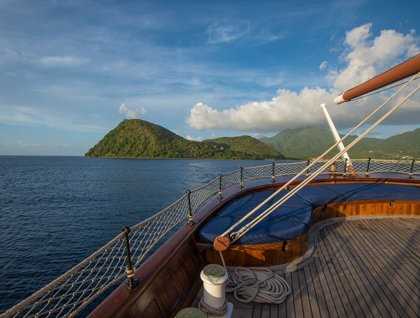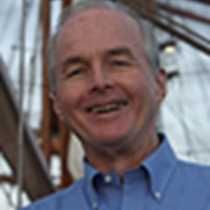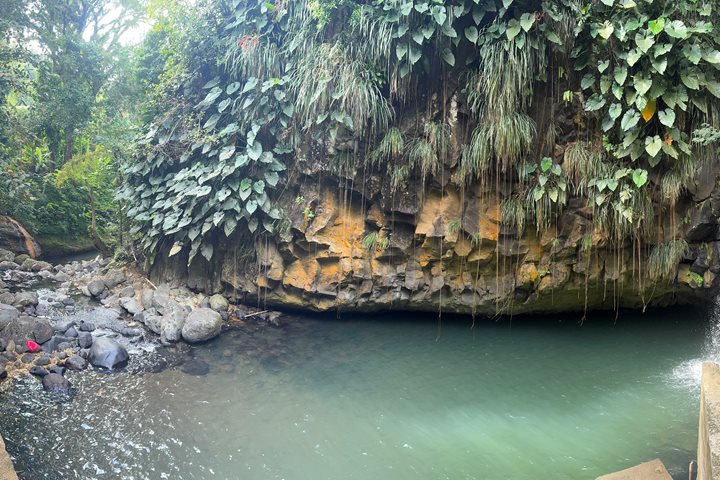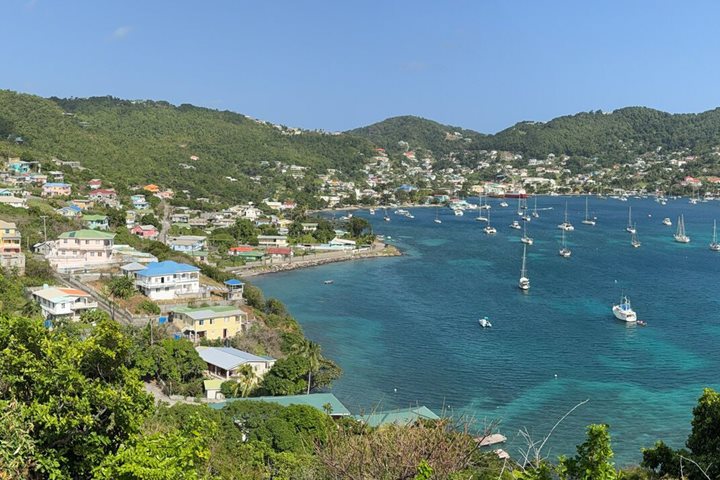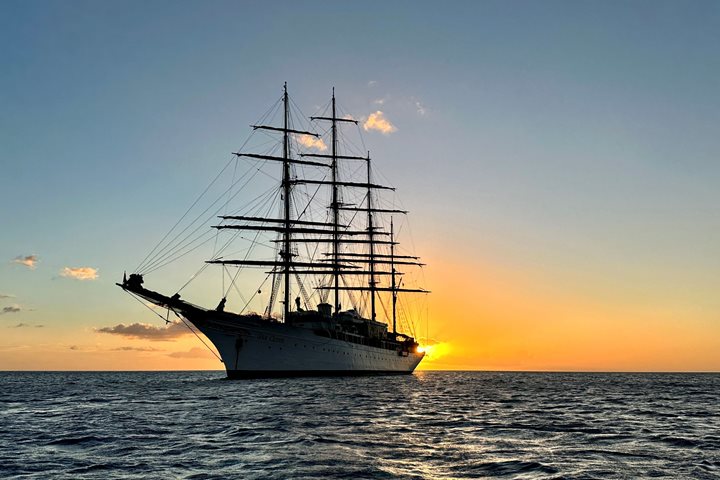We had gentle seas as we sailed along the lee shore of Dominica during the night. Columbus called the island Dominica because he first saw it on a Sunday and the Latin word for Sunday is Dies Dominae. The original inhabitants, the Kalinago’s called their island Guaticabon. We came within sight of Dominica and Prince Rupert’s Bay at 6:15 a.m. and by 7:15 we were alongside Cabrits pier and docked. The sun rose behind a heavy cloud cover and Morne Diaboltin—our rain forest destination—was shrouded in cloud. Prince Rupert’s Bay takes its name from the unfortunate King Charles I of England who lost his head by order of Cromwell in 1640. The name Cabrits is a variant of the Spanish for “goat,” so named because the Spanish left live goats here so that on their return they would have fresh meat—18th century refrigeration!
We departed for the great rain forest of Dominica driving the 35 minutes in spectacular lush mountain scenery. On our way we passed small farms growing bananas, dasheen (taro), jams, pineapples, coffee, cacao, mangoes, oranges, and grapefruits. It is said that if you plant a stick in the fertile volcanic soil of Dominica it will grow. We took the nature walk through the rain forest with our knowledgeable guides who shared with us their knowledge of the flora. I saw none of the endemic parrots, the Siserou or the Jacko, but some of my fellow travellers did. The rainfall in this forest can reach 400 inches a year and we found that to be true as we were just finishing our walk (luckily) when the rains started. On our return to the ship a number of us chose to stop in the market. There we purchased fresh green coconuts, drank the delicious coconut water, and ate the soft luscious fruit. Some also bought fresh peeled sugar cane—yum.
After a fine lunch, Tom Heffernan gave a short introductory talk about the island and Fort Shirley in particular, and led a group on the trek to this historic 18th century English citadel. It was designed (1874-78) by the 18th century American architect Harrison to protect the Royal Navy at anchor in Prince Rupert Bay. The fort’s canons could sweep the entire area in front of the town of Portsmouth. There was another battery across the Bay and the two batteries made the bay inviolate. At its zenith the fort had 700 enlisted men and a contingent of the 8th West Indian Regiment made up of slaves. Lennox Honeychurch, an old friend, single-handed has undertaken to reclaim the fort from the ravages of the jungle and the strangler figs. Lennox has worked on it for almost 35 years and it is a testimony to what an individual with passion can accomplish.
We retuned to the lovely old Sea Cloud about 3p.m. and most of us went snorkeling. The variety of fish and coral here is really remarkable. The area is a marine sanctuary and the fish exist in abundance—tangs, grunts, damselfish, parrotfish, and wrasses and probably a lot more abound. Some even saw the infamous “lion fish.” The water was very clear and one could get quite close to the fish without causing them any alarm.
We cast off from the pier at 5:30 and sailed into the lee of Dominica. Dinner this evening was on the lido deck. After dinner our National Geographic photographer Michael Melford presented a very interesting illustrated talk. All of us went off to the best with an enormous sense of gratification for such a wonderful day.

